Jeonju Nanjang (전주난장)
268.4M 2024-04-08
33-20, Dongmun-gil, Wansan-gu, Jeonju-si, Région Jeonbuk
Jeonju Nanjang désigne un musée construit comme un parc thématique situé dans le village des hanok de Jeonju, un endroit idéal pour les prises de photo et les activités autour des traditions de Corée.
Inyeon Hanok (인연)
288.2M 2024-07-01
36, Hanji-gil, Wansan-gu, Jeonju-si, Région Jeonbuk
+82-10-2908-4965
The Korea's largest "hanok (traditional Korean house)" village in the middle of Jeonju, Jeollabuk-do has been there for hundreds of years. Today, you can see new as well as old houses there. “Inyeon” is one of the traditional Korean houses located near the public parking lot on the outskirts of the hanok village, making it a great place to stay overnight in quiet. The word "inyeon" means "relationship" in Korean, referring to all types of ties with other people. The owner of the guesthouse named the place as such because she is greatful for all the guests and wanted to treat them well. She opened the guesthouse in September 2014. Since then, she has been kind enough to tell her guests which places are good to visit and which foods are delicious. She makes sure all the facilities including sheets and blankets are maintained clean for her guests to have a memorable stay. Built in the 1960's and remodeled in 2008, the traditional house is neat with most of the traditional features. It has four guestrooms named "Apricot Flower", "Orchid", "Chrysenthemum", and "Bamboo". The "Orchid Room" and "Bamboo Room" can accommodate up to seven people. The floor is covered with lacquered traditional Korean paper, and there are a number of traditional items in the room including the Korean gong. The traditional Korean ceiling rafters are visible in all the rooms.
All the rooms are furnished with a bathroom, air conditioner, TV, refrigerator, toiletries, and hair dryer. There is a 200-year-old pomegranate tree in the yard, and a table and chairs right in front of it for the guests to relax on a fair day. The table made of an old door and chairs made of a log under the red pomegranates are one of the most outstanding features of this guesthouse. There are lots of traditional items in the yard with which you can play traditional Korean games such as "yutnori" and "jegichagi", all of which can be used by the guests for free.
Sanctuaire de Gyeonggijeon (경기전)
289.1M 2024-04-08
44, Taejo-ro, Wansan-gu, Jeonju-si, Région Jeonbuk
+82-63-281-2790
Le sactuaire de Gyeonggijeon a été élevé en 1410 pour abriter le portrait du roi Taejo, fondateur de la dynastie Joseon. Ce lieu saint comporte Jinjeon où se trouve le portrait, et Jogyeongmyo abritant les plaques commémoratives de Han Lee et de sa femme, ancêtres de la famille royale Lee de Jeonju. Détruit en partie durant l’invasion des forces japonaises (1592-1598), le Gyeonggijeon qui existe actuellement a été rénové en 1614.
Festival du Bibimbap à Jeonju (전주비빔밥축제)
298.0M 2025-08-12
99, Girin-daero, Wansan-gu, Jeonju-si, Région Jeonbuk
• Centre d'appels 1330 : +82-63-1330 (coréen, anglais, japonais, chinois) • Pour obtenir plus d'info : +82-63-277-2515, 2517 (coréen)
Le meilleur des 3 mets représentatifs de la dynastie Joseon et plat préféré des étrangers, le Bibimbap de Jeonju est le plat numéro 1 de Corée. Le Bibimbap de Jeonju est cuisiné avec du riz aux pousses de soja (l’un des 10 plats réputés de Jeonju), avec quelque 30 sortes de fruits secs comme des fruits du gingko, des pignons de pin, des châtaignes, des noix, etc, et est accompagné de légumes frais qui sont choisis selon les saisons. C’est un aliment complet, sain et nutritif aimé des gens du monde entier permettant d’absorber des glucides, de la graisse, des protéines, des vitamines et des minéraux et qui contient la sagesse des ancêtres et le principe de l’univers.
‘Le Festival du Bibimbap de Jeonju 2017’ sera ouvert du 26 au 29 octobre dans la ville de Jeonju, au Centre de la Culture Traditionnelle de Corée. Centré sur le plat représentatif de la capitale de la gastronomie de Corée, le Bibimbap de Jeonju, le festival principal du Tourisme de la gastronomie sera assaisonné de différents plats et cultures de la ville et sera accompagné de saveurs, de charmes et de plaisirs exquis.
Omokdae et Imokdae (오목대와 이목대)
300.6M 2025-08-12
1-3, Gyodong 1-ga, Wansan-gu, Jeonju-si, Région Jeonbuk
+82-63-281-2114
Omokdae, situé en haut d'une colline est le lieu où Yi Seong-gye (qui devint plus tard le Roi Taejo) s'arreta pour célébrer sa victoire lors d'une bataille contre l'armée japonaise au Mont Hwangsan à Unbong vers la fin de la période Goryeo. C'est aussi là où Mokjo, l'un des ancêtres de Yi Seong-gye, vécut. Plus tard, le Roi Gojong y établit une statue monumentale, “Taejogohwang Jejupilyujibi” avec une phrase écrite de sa propre main. De l'autre côté de Yukgyo, à partir d'Omokdae, se trouve Yimokdae, au pied du Mont Seungamsan où Chimyeongjasan, sité sacré pour les catholiques demeure. A 80 m de Yimokdae se trouvent un mémorial et une maison. “Mokjodaewang Gugeoyuji”, la phrase gravée sur le monument en pierre, fut écrite par le Roi Gojong en personne. Mokjo est le cinquième ancêtre du Roi Taejo, qui fonda la Dynastie Joseon. Imokdae est connue pour être le lieu où Mokjo vécut, jouant à des jeux de formation de bataille avec ses amis étant enfant. Cette anecdote apparait également dans le Yongbieocheonga (ballade du 15e siècle narrant la longévité nationale et la réussite culturelle). Mokjo se rendit à Hamgyeong-do à partir d'Imokdae (à Jeonju) en raison de la querelle qu'il eut avec le Jeonju Busan (officiel de l'etat gouvernant la région de Jeonju). Yi Seong-gye pensa que le départ de Mokjo était quelque chose ayant été guidé par les dieux afin qu'il (Yi Seong-gye) puisse fonder Joseon et devenir le premier roi de la dynastie.
Gyodonggaon / 교동가온
300.6M 2025-08-12
73-1, Eunhaeng-ro, Wansan-gu, Jeonju-si, Région Jeonbuk
+82-10-5106-3355
Gyodong Gaon is located right in the middle of the main street of Jeonju Hanok Village. The word "gaon" means "middle" in Korean. It's a two-story traditional Korean house that stands out among the rest of the traditional Korean houses in the alley leading to Omokdae. Just inside the gate is a yard with colorful flower trees, jars of sauces, and furnace. The mural on one of the walls is popular among the guests as a place to take photos.
The "numaru", or "loft" in Korean, overlooks the Hanok Village, and is one of the best places in the village to get a closer look at the 500 year old zelkova tree and the foot of the mountain nearby. Open to all the guests, the "numaru" is very popular during the winter as well as the summer. It's an open space with a wooden floor, so it's very cool during the summer, and it also serves as an observatory to enjoy the view of all the snow-covered trees and roofs in the Hanok Village during the winter while having a hot cup of tea.
The owner of the guesthouse has been living here for 37 years. He rebuilt his house and turned it into a hanok guesthouse in 2014 while making sure the rooms are well insulated and comfortable to stay.
He built a two-story building to make an efficient use of the space, and focused on making all the rooms look different. The house has five rooms, and only the “Meomulda Room” on the first floor is the only rooms with a living room separated from the bedroom. All you have to do is open the door to enjoy the view of the yard, Hanok Village, and Omokdae. The “Nanuda Room” on the second floor is the largest one that can accommodate more than five people, making it the most popular choice among families. The "Damda Room" and "Kkumkkuda Room" both have an attic that can be reached by a ladder. The attic is big enough to sleep two adults, and some guests actually sleep there for a unique experience. One of the walls of the attic is finished with cypress wood which has a pleasant scent. The “Geurida Room” has the best view through the two windows on the either side of the room, in addition to warm sunlight and cool wind that come through the window. Modern, not traditional, doors are installed in all the rooms for better sound proofing and insulation.
Gyodong Gaon offers a number of experience programs, such as traditional games like “gulleongsoe”, “tuho", and “Korean top”, As well as “sabang chigi”, “sampalseon”, and “ttangttameokgi”.
Many Korean adults are familiar with these games, while children and foreigners can find these games interesting. All these traditional Korean games are free to play.
Damun (다문)
303.1M 2024-04-07
74-8, Eunhaeng-ro, Wansan-gu, Jeonju-si, Région Jeonbuk
+82-63-288-8607
Situated in Jeonju Hanok Village, Gyo-dong, Jeonju-si, Damun serves Korean table d’hote in a restaurant divided into large and small rooms within a hanok building structure.
Musée des portraits royaux (어진박물관)
313.4M 2024-04-24
Taejo-ro 44, Wansan-gu, Jeonju-si, région Jeonbuk
+82- 63-231-0090
[Temple Gyeonggijeon; le lieu où est conservé le portrait du roi Taejo]
Ouvert le 6 novembre 2010, le musée des portraits royaux est l'une des toutes nouvelles attractions touristiques de la ville de Jeonju, situé dans le palais Gyeonggijeon. Le musée constitue ainsi une ressource documentaire importante à la fois pour la ville de Jeonju tout comme pour le temple Gyeonggijeon qui renferme le portrait du roi Taejo. Le musée qui se compose d'étage en sous-sol et en surface occupe une surface de plus de 1000m2. On peut y apprécier le portait de 6 rois en Corée en plus du portrait du roi de Taejo. Depuis son ouverture, le musée vise à devenir une place centrale pour la vie culturelle de la région. Le musée propose également diverses activités pour se familiariser avec la culture de la royauté en Corée.
Veteran Kalguksu (베테랑칼국수)
315.9M 2025-07-10
135, Gyeonggijeon-gil, Wansan-gu, Jeonju-si, Jeonbuk
Il s’agit d’un restaurant de nouilles traditionnelles aimé des habitants de Jeonju Hanok Village depuis plus de 40 ans, ouvert en 1977. L’établissement est réputé pour son bouillon épais et onctueux, mijoté longtemps, auquel sont ajoutés du perilla (sésame sauvage), de la viande et des œufs.
Les nouilles utilisées ne sont pas les larges nouilles ordinaires, mais des nouilles fines à la texture ferme et élastique. Le plat est garni de poudre de perilla, de piment et d’algues séchées, offrant un goût et une présentation constants au fil des années.
Outre les kalguksu (nouilles coupées au couteau), le restaurant propose des nouilles froides au soja (kongguksu) au goût riche et onctueux, ainsi que des mandu (raviolis) généreusement garnis, qui accompagnent parfaitement les nouilles. Avec chaque commande, du danmuji (radis mariné jaune) et du kimchi de radis en dés (kkakdugi) sont servis ; ce dernier est préparé maison avec des radis d’hiver de Jeju, ce qui lui confère un goût encore meilleur.
◎ Informations sur la Hallyu : ce restaurant est l’un des établissements fréquentés par les acteurs du drama Vingt-cinq, vingt et un. L’actrice principale, Kim Tae-ri, y est venue pour son petit-déjeuner lors du tournage de son vlog, attirant l’attention en dégustant son bol sans en laisser une seule nouille. Tout près se trouve aussi "2521 Guesthouse", la maison d’hôte ayant servi de résidence à Hee-do dans le drama, qui vaut une visite après le repas.
Yeohangga / 여행가
326.1M 2025-08-12
74-11, Eunhaeng-ro, Wansan-gu, Jeonju-si, Région Jeonbuk
+82-63-231-3040, +82-10-7742-6738
Yeohangga is a guesthouse owned and run by a woman who majored in early childhood education and who has been teaching children for over 20 years. The name means "A home for a happy trip," she says. It’s a unique guesthouse since the owner offers various traditional educational games. The cozy and comfortable guesthouse is a traditional Korean house built in March 2013 at a site where an old house used to be. The main building and detached building are divided by the ridge of the roof with beautiful rafters. There is another meaning to the name of the guesthouse: "a house where the woman is happy." She named it as such for a good reason. She used to live in Seoul when her parents advised her to move to Jeonju and run a guesthouse, leaving her husband and child behind. At first, she considered accepting only female guests, but it wasn't an option since most of the people visiting Jeonju are couples and groups of friends. Instead, she made sure the guesthouse is safe for women while building the house. Many female tourists traveling alone find this a great feature of the guesthouse because they feel safer during their stay. For one, she installed three doors for the rooms (1 transparent door, 1 opaque glass door, and a traditional Korean door). Not only do the guests feel safer; the rooms are also well-insulated thanks to the triple doors. The floors and walls are covered with traditional Korean paper coated with soybean oil, which is very environment-friendly. In the four rooms named “Spring,” “Summer,” “Autumn,” and “Winter,” there are many toys and materials for traditional Korean cognition games, such as “Chilgyo Game,” “Gonu Game,” and “Mabangjin.” It’s very likely that even Koreans have never heard of these games. The owner of the guesthouse chose these games specifically because they are perfect for children to play in a traditional Korean house. She teaches her little guests how to play the games. “Chilgyo Game” involves making a shape with 7 to 20 pieces, whereas “Gonu Game” is similar to the game of Chinese chess. "Mabangjin" is a type of IQ game that involves laying down a total of nine different numbers in three rows and columns so that the sum of the three numbers is identical when added horizontally, vertically, or diagonally. Many guests find these games interesting, and the owner of the guesthouse finds joy in teaching these games to as many families as possible. She recently took over another traditional Korean guesthouse called "Samrakheon" near the Jeonju Oriental Medicine Center. It's a stand-alone guesthouse for groups and families, and she uses the place to teach traditional games to more people.
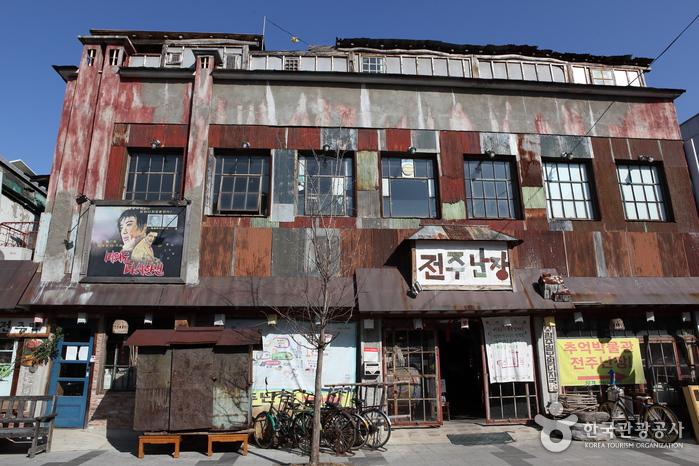
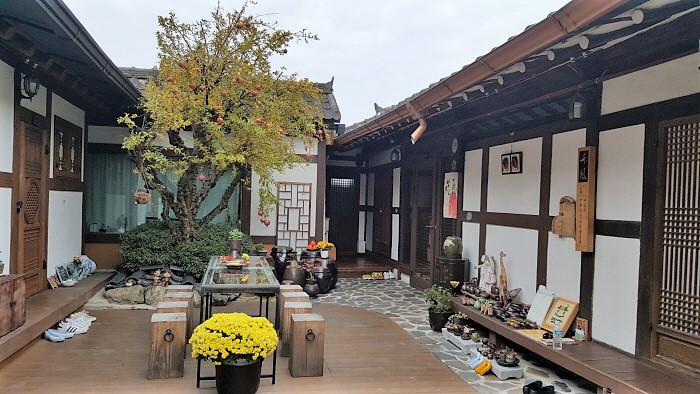

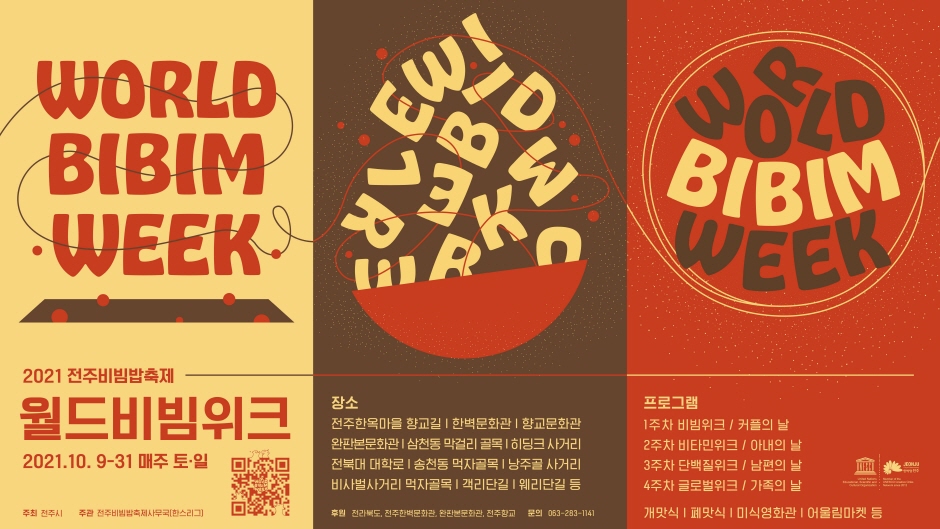
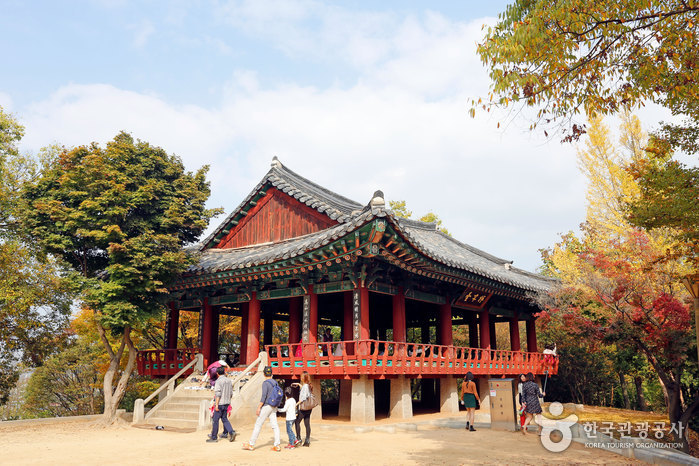
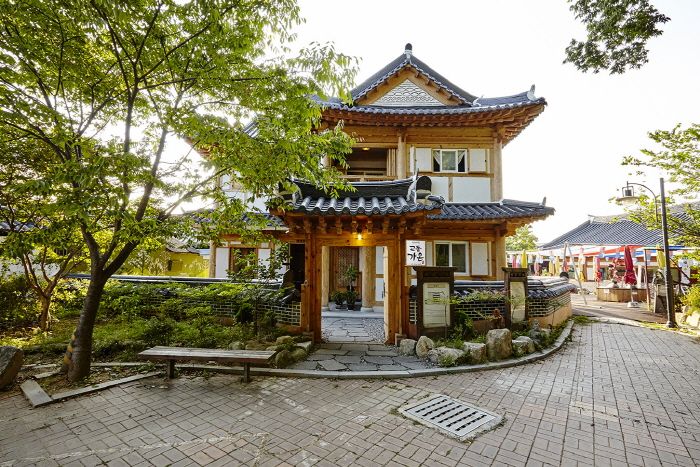


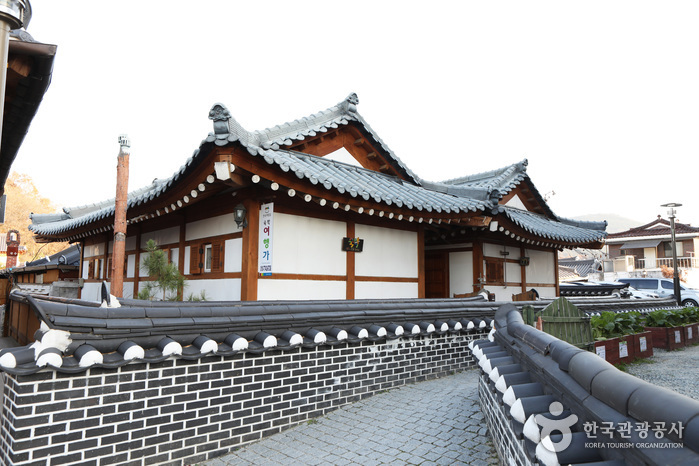
 Français
Français
 한국어
한국어 English
English 日本語
日本語 中文(简体)
中文(简体) Deutsch
Deutsch Español
Español Русский
Русский